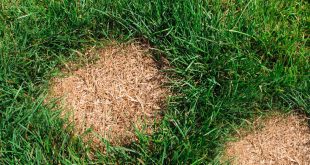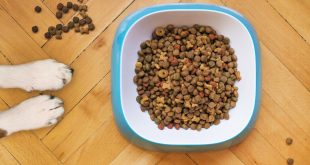This post may contain affiliate links. Please read our disclosure.
Do you ever find yourself wondering how long your dog food will last? Is it still safe to feed your pup after a few months, or should you be throwing out the bag and starting fresh? With proper storage techniques, you can keep your pet’s food fresher for longer. In this essential guide, we’ll explore everything there is to know about storing dog food correctly!
Article Contents
Types of Dog Food
When it comes to feeding your furry best friend, understanding the different types of dog food available is essential. Not all pet foods are created equal and some may be better suited to certain breeds or dietary requirements than others. Knowing what type of food will provide the most nutrition for your pup can help ensure they live a long and healthy life.
Dry kibble is one of the most popular types of dog food out there; it’s relatively inexpensive, easy to store, and lasts a while. It typically has plenty of carbs as well as protein sources like chicken meal, lamb meal, fish meal, etc., plus vitamins and minerals that are added during production for extra nutritional value. Plus you don’t have to worry about spoilage!
Canned wet food is another popular choice among pet owners because it generally contains more moisture than dry kibble- which helps keep your pup hydrated (which is especially important in hot climates). This type of food also typically contains more meat proteins than dry varieties so if your pooch needs an extra boost in their diet this could be a good option for them. Additionally canned wet foods tend to smell much stronger which some dogs really enjoy!
Semi-moist/soft-dry foods usually come in pouches with separate compartments filled with moist chunks or nuggets mixed with crunchy bits that provide texture variety when chewed – these can be great snacks too! The main benefit here would be convenience; no need to measure portions or mix ingredients together – just open up the pouch and serve! However semi-moist/soft dry foods do contain more sugar and preservatives than other types so should only be used sparingly over time as treats rather than regular meals.
Finally there are freeze dried raw diets made from whole meats, organs & bones that have been freeze dried into small bite sized pieces – this form provides maximum nutrient retention while still being convenient & shelf stable but does require rehydrating before serving which can take extra time depending on how much you want soak up beforehand. This type of diet recreates what wild canine ancestors ate giving them all the nutrition needed without any artificial additives or fillers making it an ideal choice for those looking for something very natural & balanced for their pups health & wellbeing!
How Long Does Dog Food Last?
When it comes to feeding our beloved four-legged friends, the question of how long does dog food last is an important one. Unfortunately, there isn’t a simple answer as every type of dog food has its own shelf life and storage requirements.
Generally speaking, canned or wet dog food tends to have a shorter shelf life than dry kibble. This is because canned foods contain more moisture and require refrigeration after they are opened – typically only lasting 3-5 days in the fridge before needing to be thrown out. On the other hand, unopened cans should remain safe for use up to two years after their production date if stored correctly (cool & dry).
Dry Kibble on the other hand has been specially designed with stability in mind and can usually last up to 12 months without being opened. Of course this all depends on how well you store them (in a cool & dry place away from direct sunlight) as exposure to extreme temperatures can shorten your kibbles lifespan significantly – especially when exposed directly to hot air or humidity! Additionally, once opened it would be wise not leave any leftovers lying around too long either as airborne bacteria could contaminate them quickly making them unsafe for consumption by your pup!
Storage Considerations for Dog Food
When storing your pet’s food, there are a few things to consider. First, the type of container in which you store the food matters. Plastic bins or bags that can be sealed tightly are great for keeping out moisture and pests such as mice and ants. Make sure to label the container with the expiration date of the food so you know when it needs to be replaced.
In terms of location, it is best to keep dog food away from direct sunlight and extreme temperatures (like a garage). A cupboard or pantry near where your pup eats is ideal. Keep an eye out for signs that storage conditions may not be suitable – strange smells, visible mold/mildew on containers or packaging, etc – these could all indicate that it’s time to throw away old dog food and get some fresh supplies!
Indicators of Spoiled Food in Dog Food
The presence of certain indicators can tell us if a dog’s food has gone bad. Unfortunately, it is not always easy to recognize the signs that something is wrong with our four-legged friends’ meals. In order to ensure proper nutrition and safety for your pup, here are some key indicators to watch out for when assessing the quality of their food:
Appearance – First and foremost, we should be sure that the appearance of the dog food hasn’t been compromised in any way. If there are noticeable changes in color or texture, this could be an indicator that spoilage may have started. Additionally, check for mold growth which can occur on both wet and dry foods; if you see anything like this it is strongly advised to discard immediately as most molds are toxic to dogs.
Smell – Smelling a bag of dog food before feeding your pet can provide insight into its freshness – if there’s an off smell or pungent odor coming from the package then its best not feed it! Of course oxygen exposure over time will naturally cause odors but they shouldn’t be overwhelming or unpleasant so use your best judgment when making decisions about feeding unfamiliar packages of kibble or canned goods.
Taste Test – While tasting isn’t recommended due to potential harm from any toxins within spoiled food; a simple lick test on either wet or dry foods can give you a good indication as whether something has gone bad. The taste should still remain pleasant (as intended) and not lay heavy upon your tongue indicating rancidity from oxidation due to poor storage conditions/lengthy shelf life past expiration date etc…
Best Practices for Feeding Dogs
Feeding our four-legged friends is a crucial part of taking care of them. With the right food and routine, we can make sure that they stay healthy and happy for years to come. Here are some tips on how to feed your dog properly:
• Establish Consistency: Dogs like predictability and the same meal times daily help them establish a regular routine. Feeding at similar times each day helps prevent digestive issues as well as behavioral problems such as begging or stealing food from counters.
• Choose Quality Food: It’s important to select high-quality foods with appropriate ingredients for your dog’s age, breed, size and activity level. Read labels carefully to check for correct balance of proteins, carbohydrates, fats & vitamins so you know your furry friend is getting all their nutrition needs met. Make sure to always get fresh food from trusted sources too!
• Provide Adequate Portions: Measure out meals depending on what type of food it is – wet or dry food – then use kitchen scales if necessary when determining portion sizes based on the label instructions in order to ensure proper nutrition for your pup! If you’re unsure about amounts, ask your vet who will be able to advise accordingly. Generally speaking though; puppies need 3-4 meals per day while adult dogs should have 2 meals per day – but this may vary depending upon individual circumstances too so always consult an expert first before making any changes.
• Don’t Overfeed Treats: Treats are great rewards but should only make up around 10% of their total diet as overfeeding can lead to weight gain which in turn increases risk of health issues such obesity related diabetes etc… Introduce new treats gradually into their diet after consulting with an expert veterinarian since some snacks could cause allergies or even toxicity if not given correctly (e..g chocolate).
Meal Portions and Frequency
Choosing to eat healthy can be a difficult task. It’s important to pay attention to both the portion size and frequency of your meals in order to maintain an optimal diet. When it comes to meal portions, try not to go overboard! Eating too much can lead to weight gain, so make sure you are mindful of how much food you are consuming at one time. A good rule of thumb is that your plate should only consist of half vegetables, one fourth protein, and one fourth carbohydrates.
Frequency is also crucial when it comes eating healthily. Try not to skip meals because this can cause the body’s metabolism rate slow down which may result in cravings for unhealthy foods or overeating later on in the day when hunger takes over. Instead, aim for multiple small meals throughout the day – this will help keep energy levels high and prevent unnecessary snacking between meals as well as keeping hunger at bay until regular mealtimes arrive again! Here are some tips:
• Aim for five or six smaller meals per day rather than three large ones
• Make sure each meal contains a balance of fruits/vegetables + proteins/carbohydrates
• Don’t forget snacks like nuts & seeds in-between meals if needed
Advantages of Home Cooking Dog Food
When it comes to keeping your four-legged family members healthy, there’s no better way than cooking for them at home. Home cooked meals provide your dog with all the nutrition they need and can be tailored to fit their individual dietary needs. There are several advantages of feeding your pup homemade fare that go beyond just good nutrition.
Cooking for Fido yourself allows you to have complete control over what ingredients go into his meals and ensure quality standards are met. Many store bought brands contain fillers like corn and soy that lack nutritional value while also being difficult on a dogs digestive system. By making food in the comfort of your own kitchen, you can guarantee only fresh, whole ingredients make it into their bowl every time. This helps promote a healthier gut which is essential for overall wellbeing as well as stronger immunity against disease or illness.
Another perk of home cooking is convenience; having pre-made meals ready to serve saves precious time during busy days when still wanting to maintain optimal health in our pets! Additionally, preparing meals from scratch gives us peace of mind knowing exactly how much fat and protein content we’re giving our furry friends in each meal – something that may not always be so clear with commercial brands due ingredient inconsistencies or mislabeled packaging information . Finally, an added bonus: home cooking is often less expensive than purchasing all-natural pet food off the shelf!
Wrap up!
In conclusion, it is important to understand the types of food available for your dog and how long they last. It is also wise to be aware of storage considerations, indicators of spoiled food, best practices for feeding a dog and meal portions and frequency. Lastly, there are advantages to home cooking their meals as you can ensure the quality of ingredients and customize it according to their needs. All in all, being informed about these topics will help you provide the best nutrition for your beloved canine companion.
FAQ
how long does dog food last?
Dog food can last anywhere from 6 months to a year, depending on the type of food and the conditions it is stored in. It’s important to check for signs of spoilage such as odd odors or discoloration before feeding your pet.
What should I look for when buying dog food?
When shopping for quality dog foods, look at labels carefully and make sure you’re selecting products made with healthy ingredients like whole grains, fresh fruits and vegetables, lean proteins, and omega-3 fatty acids. Avoid foods with artificial preservatives or fillers that don’t provide nutritional value.
Can dogs eat human food?
In moderation yes! However some human foods are toxic to animals so be sure not to feed your pup anything containing onions or garlic, grapes or raisins, macadamia nuts, chocolate, caffeine or alcohol. Furthermore avoid processed meats like hot dogs as they contain high levels of sodium which is not good for canine digestion.
Do different breeds require specific diets?
Yes! Different breeds have varying dietary needs due to their size and activity level; larger breeds usually require more calories while smaller ones need fewer calories but higher fat content in their diet than medium sized dogs do. Researching online resources about breed-specific nutrition requirements can help determine what kind of diet will work best for your pup’s age and lifestyle.
How often should I feed my dog?
Most experts recommend feeding adult dogs twice daily—once in the morning after getting up from sleeping through the night then again in late afternoon/early evening before bedtime—but puppies may need three meals per day until they reach adulthood around 1 year old. Additionally all meals should be served at regular intervals throughout the day to keep blood sugar levels consistent; this helps reduce any possible mood swings caused by sudden hunger drops throughout the day!
 Petnile Comprehensive Pet Care Guides
Petnile Comprehensive Pet Care Guides



